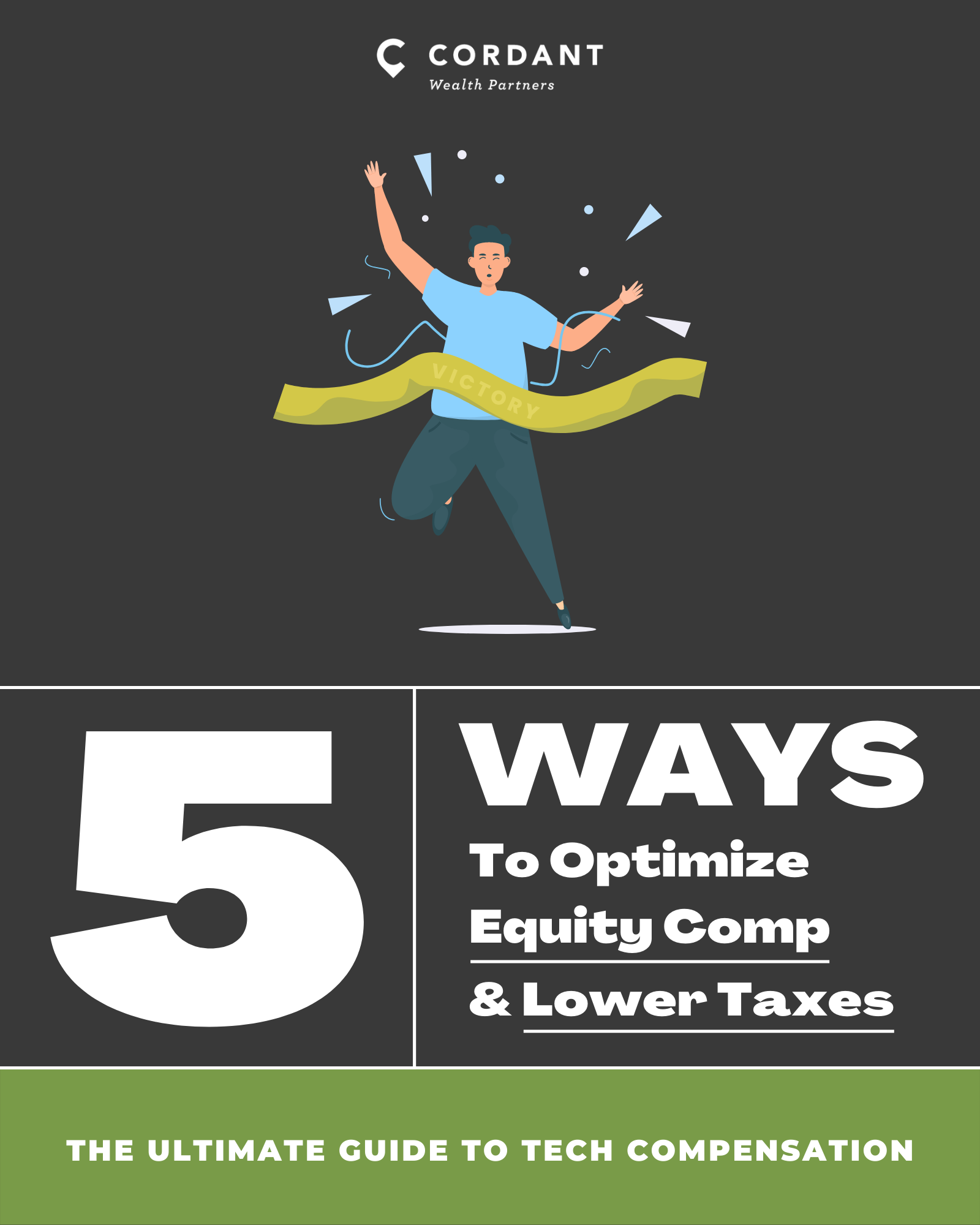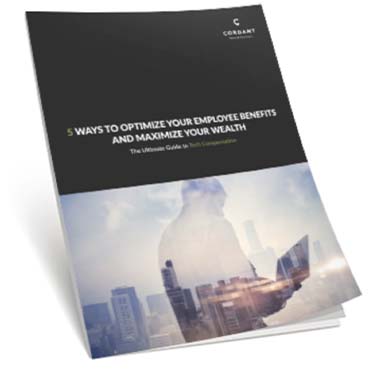During layoffs, Intel offers severance packages or voluntary separation packages (VSP) when cost reductions are a priority.
Most recently, Intel announced layoffs impacting 11% of the workforce in the fall of 2022 with a plan to cut $3 billion in costs over the next year.
If you’ve been offered a severance, layoff, or voluntary separation package at Intel, this guide will cover:
- The key components of the package
- The 4 steps you should take
- How to optimize the timing (if possible)
Intel Severance Package: How it Works
Severance (or layoff) packages at Intel have three main components: Income, Medical, and Stock.
Income
Typically, Intel offers as part of a layoff package a certain number of weeks of pay plus payout of earned benefits and bonus.
- Severance pay: Severance at Intel is typically structured as a fixed number of weeks + weeks based on the length of service. For example, 4 weeks + 1.5 weeks per year of service. So, twenty years of service equals 30 weeks of severance pay.
- Vacation & Sabbatical: Weeks accrued of vacation and sabbatical (4 or 8 weeks) are typically paid as part of your severance package as well.
- Bonus: A prorated Annual and quarterly bonus (APB or QPB) are typically paid out as well.
It’s important to note, severance payouts are taxed, and taxed as ordinary income in the year of payout. So, if you separate from the company near the end of the year, earning both a full year of salary plus severance payouts, you could be pushed into a higher tax bracket.
Tax planning for a transition out of Intel is critical.
Medical
As part of your separation package at Intel, it’s typical to get a year of COBRA which pays for continued health insurance coverage and allows you to stay on your Intel plan.
Stock
Occasionally, Intel will offer accelerated vesting of RSUs as part of a layoff or separation package. This is in addition to the accelerated vesting provided by Intel retirement rules.
- “Rule of 60” employees aged 60 or older receive one year of accelerated vesting for every five years of service
- “Rule of 75” employees whose combined age + years of service is 75 or greater receive one year of accelerated vesting on their RSUs
Intel Severance Package: 4 Steps to Take
With a layoff package in hand, and severance payout calculated, there are four steps to take to evaluate the package (especially if it’s a Voluntary Separation Package).
1. Identify and Write Down Your Objectives and Goals
Ultimately, you need to determine what you (and your spouse, if applicable) want to achieve so that you can determine whether or not taking a severance or separation package will affect your ability to accomplish it. Identifying objectives and goal setting is a simple but crucial exercise and frankly, should be done prior to making any financial decision. (However, I recognize it often takes a big decision like this to force the process.)
Two important reminders about identifying objectives:
- Make them SMART (Specific, Measurable, Attainable, Realistic and Time-bound), and
- Prioritize them — if you can’t do all of them, you’ll know which to cut first
My grandpa used to say to my grandma “know what you want, so you’ll be satisfied if you get it.” (She didn’t take well to him saying that, but I think his intention was in the right place).
2. Document Your Current Assets (In One Place)
Once you have documented what you are trying to achieve (your objectives and goals) the next step is understanding what assets you already have in place to achieve these.
Having a clear understanding of what you have will allow you to evaluate the impact of additions that come from future work or from a severance package.
It is possible that you have assets that go beyond this list but we most commonly see the following:
- Intel 401(k)
- Intel Retirement Contribution Plan
- Intel Minimum Pension
- SERPLUS (Intel’s deferred compensation account)
- E*Trade Stock Account
- Expected SERMA Balance
- HSA
- 401(k)s from a prior employer
- Spouse’s Retirement Accounts
- You and Your Spouse’s IRAs (both traditional and Roth)
- Taxable Brokerage account
- Real Estate Assets (those you would use to support your lifestyle in retirement)
- Cash Accounts (Checking, Savings, CDs, etc.)
3. Create Two Comprehensive Future Cash Flows: One Where You Take the Package, One Where You Don’t
Creating comprehensive cash flows is probably the most difficult step I’m listing here. It’s difficult because to be useful, it needs to account for known future inflows and outflows. This will require you to make assumptions for items like Social Security, inflation, health care costs etc., and you will need to incorporate the objectives and goals you listed in Step 1.
However, the work you put in here will be worth it, because to truly understand the trade-offs associated with taking or not taking a separation package, you have to understand the real-time cash flow effects.
We most often see the following having the biggest impact when evaluating a separation package’s effect on cash flows:
- Current Age: Obviously, the younger you are the longer your assets will need to support you. Additionally, the farther you are from Medicare eligibility (age 65) the longer you may need to purchase health care on the open market, which is a large expense.
- Taxes: An unfortunate side effect of the big payouts that come with severance packages can be paying more in taxes than you would have had the same payments been made over a longer period of time. Accelerated vesting of RSUs, payment of future bonuses and payment of future salary-not-yet-earned are all great benefits of a separation package. However, you will need a cash flow in place to help you understand the tax impact. The cash flow will allow you to make apples to apples (e., net of tax) comparisons.
- Your Health Care Options: Many separation packages come with health care benefits such as extended or paid-for COBRA coverage or increases to SERMA. These health care benefits also can heavily impact cash flows.
4. Evaluate Whether the Assets You Listed in Step 2 can Support Each Cash Flow. If there is a gap, understand the magnitude.
The final step is determining whether you Intel layoff package will allow you to achieve the objectives and goals identified in step 1 (and which are now accounted for in the cash flows you created in Step 3).
At Cordant, we use Monte Carlo analysis, which is a probability analysis indicating the likelihood that assets can support cash flow over time given historical risk and return assumptions. Regardless of the method you use, the evaluation will need to tell you whether the separation package is enough.
Ideally, the assets you have accumulated and documented in Step 2 can support both cash flows, in which case the decision is easy: Do I want to keep working here or not?
But often that’s not the case. If you can’t support the future cash flow with the separation package alone, it doesn’t mean you turn down the package, go back to work and hope for the best.
If you have completed these steps, you now have the tools in place to understand how much you need, and you will be able to answer these questions:
- What is the risk if I keep working but am laid off?
- If I can negotiate the package, what exactly do I need to get from those negotiations?
- How much do I need to make and how long do I need to work if I choose to take the package and work elsewhere?
Executing the 4 steps I have listed here will take a lot of work, but it is achievable and will help you make a smart financial decision if you are offered a separation package. If this isn’t work that you want to do yourself, please reach out and ask for help (because this is work that we love to do)!
Optimizing the Timing of Your Intel Separation Package
Fully realize that you may not be able to control the timing of your departure from Intel, but if you can, here are some key dates to be aware of.
1. Annual Performance Bonus – Carrot Date: December 31stor, if eligible for retirement, the 16thof your last month of work
In order to receive the Annual Performance Bonus payout, an Intel employee who is not yet eligible for retirement needs to work through the last day of the applicable bonus period. For APB, December 31st is the magic day. However, if you are eligible for retirement at Intel (here’s a helpful post on the subject), the APB will be prorated according to the number of full calendar months you worked. If eligible, you will receive full credit for your last calendar month of employment if you work through the 16th of that month.
2. Quarterly Performance Bonus – Carrot Date: Last date of the quarter – March 31st, June 30th, September 30thand December 31st
Intel shares it profits with employees in the form of a quarterly bonus four times per year. In order to receive the quarter’s bonus, you must be employed through the last day of the quarter: March 31st, June 30th, September 30th and December 31st.
3. RSU and OSU Grant and Vesting Dates – Carrot Date: Depends on date of grant
It’s clear that you want to be aware of vesting dates because you have to be employed through the vesting date in order to receive the stock. Most often, April is the time of which to be cognizant, but it varies depending on the grant. The actual vesting dates are easily viewed if you login to E*Trade.
If you are eligible for Retirement and over 60, or if you meet Rule of 75, you should also consider the award dates when planning retirement as working until the vesting dates still, in most cases, gets you an extra year of vesting.
4. SERPLUS – Carrot Date: January 15th
If you are eligible for and have significantly contributed to Intel’s deferred compensation plan, there can be significant tax implications for retiring before January 15th if you have elected to have your deferrals (or some of your deferrals) be paid in the “year after retirement.”
The reason January 15th matters: If, for example, you retired on the 14th of 2019, the “year after retirement” for SERPLUS would still be 2019. If instead, you worked through the 15th, the “year after retirement” would be 2020. This timing matters because if your annual bonus, vesting stock, and first SERPLUS distribution all hit in the same year, you may be pushed into a much higher tax bracket than if the SERPLUS distribution didn’t come until the following year. The bottom line, working that extra day could mean paying a whole lot less in taxes.
Conclusion
Dealing with layoff and severance packages is stressful and never fun. But if you are evaluating a package, hopefully, this post provides guidance to help make the decision easier on you.
To recap, if you are offered a severance package from Intel, take the following steps:
- Understand and calculate the full details and timing of the package.
- Create your personal financial plan and understand how your severance package impacts your ability to achieve your financial goals
- If possible, optimize the timing of your separation to minimize taxes and maximize your benefits.
And if you need help with the heavy lifting on any of this, reach out. The best place to start is your free Personalized Financial Assessment.
Information obtained herein is from sources that are believed to be reliable. However, such information is subject to change and is not independently verified. Please check with your HR for the most up-to-date plan information.
Cordant, Inc. (“Cordant”) is a registered investment advisor. Even though we have clients who are current and former Intel employees, we are not suggesting that Cordant is affiliated, associated or endorsed by Intel.


